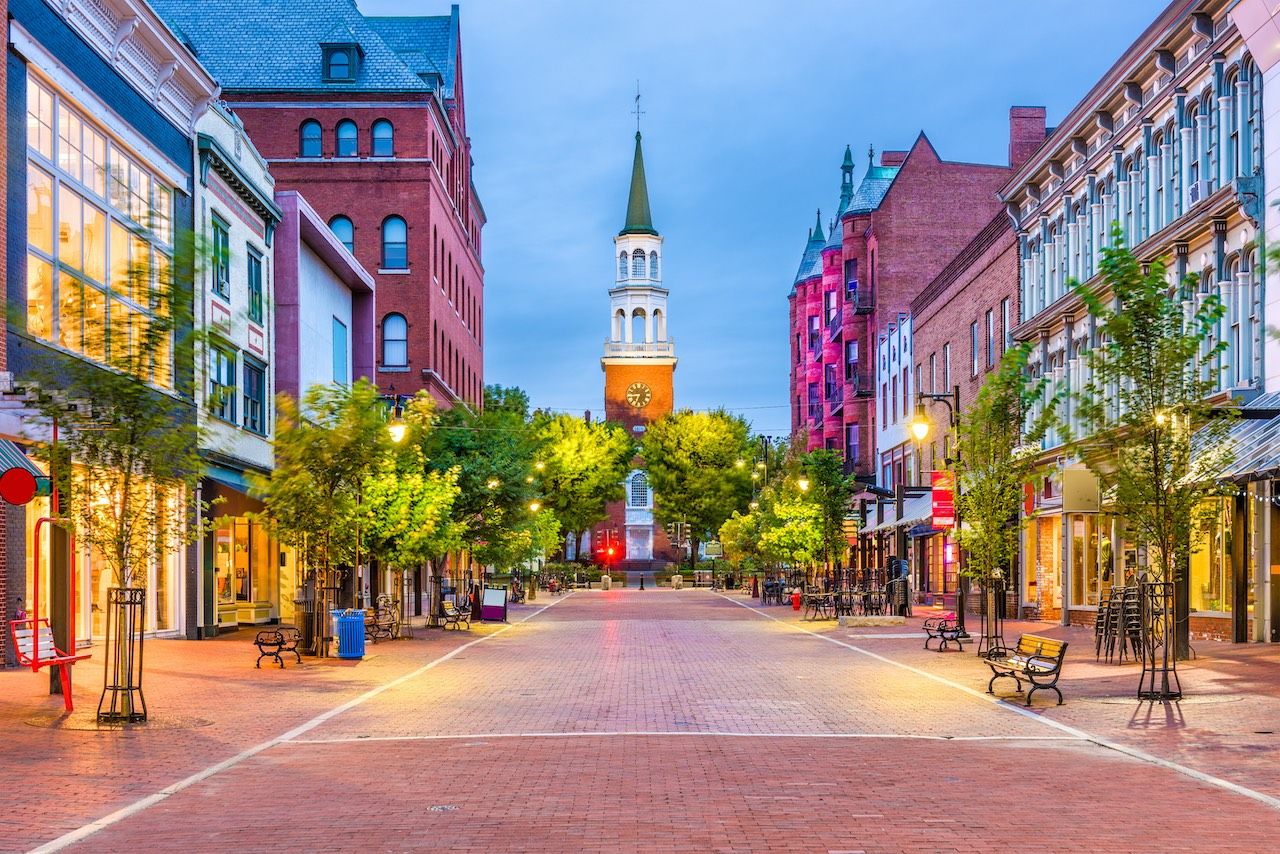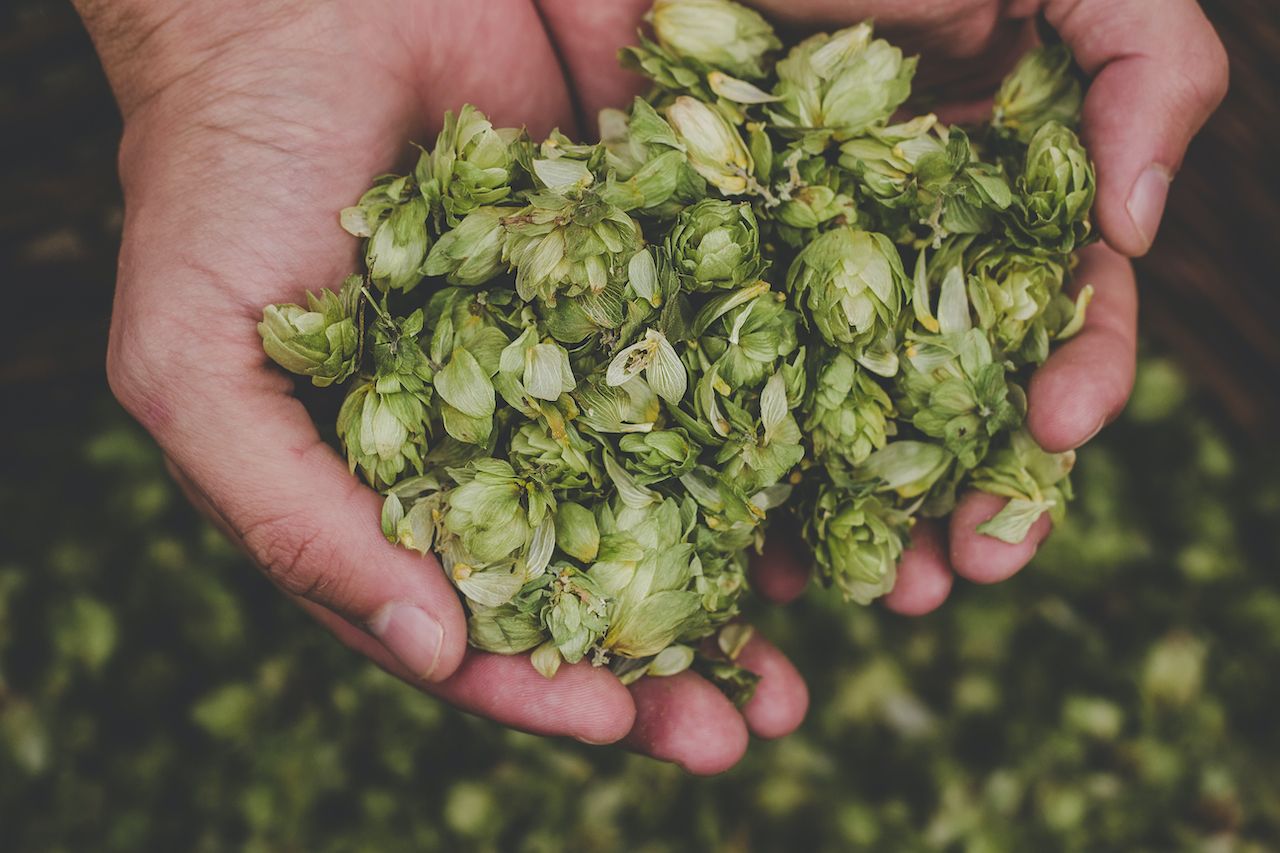Vermont may be one of the smallest states in the country (indeed, you could fit 17 of them into California), but it’s a four-season destination that packs an awful lot into its 9,600 square miles. So much, in fact, that you could easily visit six (or more!) different times and have six completely different trips.
Don’t believe us? Check out the themed itineraries below and start dreaming about what your ideal vacation to the Green Mountain State might look like.
Note: Before you travel to Vermont, please review all travel guidance and restrictions currently in place, and contact all locations prior to visiting for the latest on closures and other safety info.
Itinerary #1: From alpine cheddar to Valdés Blue

Photo: Shutterstock/MSPhotographic
It’s not just the local cheeses that are rich and varied — Vermont’s dairy history is, too: Almost every farm in the state produced its own fresh butter and cheese in the mid-1800s. And while technology and innovation have changed the agricultural landscape here, dairy’s roots hang on.
Delve into the state’s legacy via the Vermont Cheese Trail, a veritable quest to experience every superb cheese producer open to the public. Forty-five stops (offering more than 150 varieties!) dot the map, covering every nook and cranny of the state. If you’re feeling truly inspired, start at Spoonwood Cabin Creamery down in Jacksonville and work your way north to Barn First Creamery or Boucher Family Farm, both near the Canadian border. (Bold palates shouldn’t miss the much-awarded Boucher Blue.)
If you need more info before committing, peruse the members directory to get a sense of what each cheese vendor brings to the table — some just specialize in one or two varieties — and plan an adventure to your tastes.
Itinerary #2: Historic downtowns & main streets

Photo: Shutterstock/Sean PAvone
Many Vermont towns have that Currier & Ives-print charm to them — don’t limit yourself to just these four:
- Woodstock is known for its historic buildings, including the memorable pink sandstone Norman Williams Public Library dating to the 1880s. If you stroll down and around Central Street, it feels like being inside a “living history” village. (The Billings Farm & Museum, for example, has a preserved farmhouse from 1890.)
- The state’s largest city, Burlington is located on the eastern shore of Lake Champlain and is especially well known for its downtown pedestrian shopping scene (Church Street). But it also sits in the center of a region with incredible cultural-historical offerings — when you visit, don’t miss the 45-acre Shelburne Museum and the Ethan Allen Homestead Museum, dedicated to the state founder and folk hero from the late 1700s.
- Middlebury, perhaps best known for its college of the same name, was originally an agricultural town that flourished in the mid-1800s. Today, it has the only remaining car-hop restaurant in the state, and its downtown is all nostalgia with historic brick and stone buildings.
- The small town of St. Johnsbury was a commercial hub in the 19th century and blossomed with the advent of the railroad line from Boston to Montreal. It’s well worth a visit for its 12 buildings on the National Register of Historic Places and the St. Johnsbury Athenaeum, the only National Historic Landmark in the state’s northeast.
Itinerary #3: All about the arts

Photo: Shutterstock/Todja
Vermont is about as passionate about the arts as a place can get, which means fun activities for the whole family, from kid-friendly galleries and museums to COVID-friendly, outdoor sculpture parks.
If you need a good primer, visit the Vermont Arts Council website. Its full calendar includes both community events and the lineups for nearly every local “venue,” organized by region. You might find an event at the Hyde Park Opera House; you might find one at Lincoln Peak Vineyard. You’ll definitely find surprises.
What’s more, stay downtown, and an art walk will likely be — at some point — out your front door. From the fall gallery stroll in Brattleboro to Montpelier’s Alive Art Walk, which goes all out with almost too many open venues, these communities stay engaged and connected through the arts. Expect gallery and street performances, too.
Tip: If you’d rather soak up artsy vibes from your armchair, check out these virtual experiences that you can participate in from anywhere, year-round.
Itinerary #4: Hops & lagers

Photo: Shutterstock/Fedorovacz
With over 56 craft breweries in Vermont, there’s a new taproom you can discover every week of the year (with a few leftovers for the holidays).
The state’s 160-year history of hop production has resulted in several signature styles and tastes, including Black IPAs and Cascadian dark ales. Definitely pay a visit to Foam Brewers on Burlington’s beautiful Lake Champlain waterfront. Foam makes many of their beers using Peterson Quality Malt, whose ingredients come from a farm just down the road.
A more comprehensive way to get behind the scenes is to chase your way across the Vermont Brewers Association’s designated beer trails. They also can hook you up with the right tour: Green Mountain Tourism, for example, has a tasting tour paired with B&B accommodation, and another that focuses on local wines and ciders. You can also build your own custom tour (for groups of four or more).
Itinerary #5: Scenic byways

Photo: Shutterstock/Don Donelson
Vermont’s 146-mile Route 100, which traces the eastern edge of the Green Mountains, is one of the most beautiful drives you can take any time of year. Running the length of almost the entire state, it offers postcard views of farms, churches, and downtowns, as well as access to hiking and backcountry ski trails. Be sure to make a stop at Fletcher Farm, the country’s oldest residential craft school, when you’re near Ludlow.
The Crossroad of Vermont Byway, a 50-mile drive that connects several historic towns (including the aforementioned Woodstock), is one to consider for festival-hopping. And if you’d rather not bother with a long drive, try the Green Mountain Byway, which whizzes by the Ben & Jerry’s factory store. It’s no more than 30 minutes long — not counting stops, of course.
There are 10 designated byways in total, ranging from 14 to 400 miles, from the shores of Lake Champlain to the shires across the state. The best part? Each one connects to just about every other itinerary on this list.
Itinerary #6: All the ways to winter

Photo: Shutterstock/Yiwenz
Tiny Vermont somehow contains an embarrassment of riches in the slopes and resorts department: The state packs in 20 alpine ski resorts and over 7,300 acres of alpine terrain. If you like to be spoiled for choice, head here.
And it’s not just for the Olympian: Toddlers, amateurs, and pros alike will find plenty of cross-country trails, downhill slopes, snowmobiling routes, tube hills, and wintry, backcountry cabins to appeal to them. With the first chairlift in the country on Mt. Mansfield in Stowe, Burton snowboards crafted in Burlington, and the first Nordic ski center at Trapp Family Lodge, Vermont has a long and storied history of celebrating winter, and there are so many ways to celebrate yourself.
But if you’re here for the big names, popular ski areas include Killington, known for its wide-open groomed trails; the larger-than-life mountains of Jay Peak; the family-friendly terrain offerings at Okemo; and Smuggler’s Notch, consistently named one of the best family resorts in the country. Killington to Jay Peak is just under 2.5 hours — honestly, who says you have to choose?

